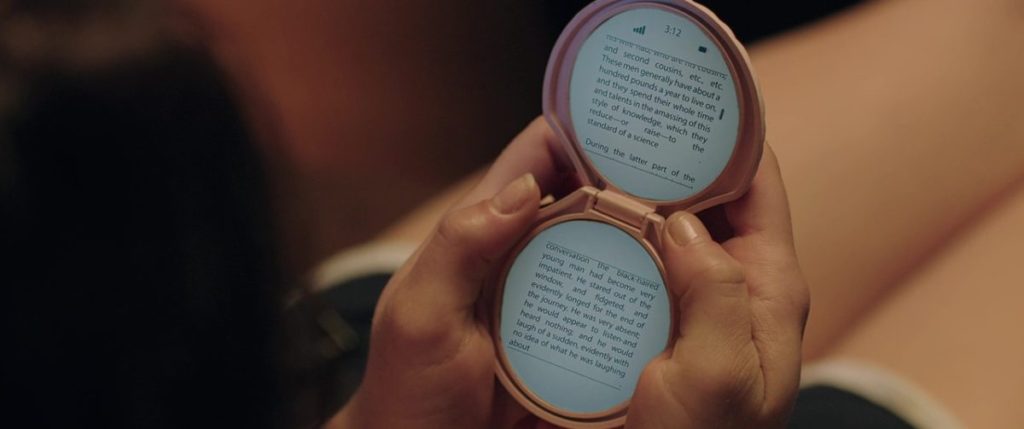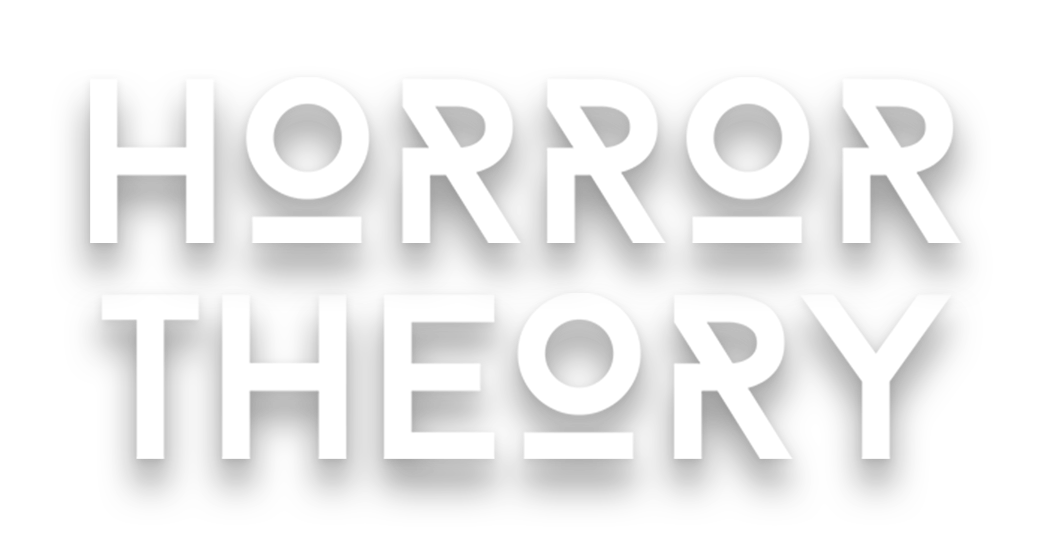Sex and horror have been tethered together in film since the genre’s beginnings. Horror cinema remains one of the sharpest means for addressing, through a metaphorical or fantastical lens, the ideas, fears, and anxieties that we may struggle to face in real life. Historically, horror films have provided some of the most insightful perspectives on how a certain generation or culture has felt about social perception of sex in emerging adulthood.
Portrayals of sex in the genre have gone through countless stages of evolution, marked by various sexual movements through history. And in 2014, we arrived at what seems to be the most uniquely 2010s take on the classic “you have sex, you die” horror trope in It Follows. Here, writer-director David Robert Mitchell uses sex as a jumping off point to the real source of fear, anxiety, and horror for this generation: adulthood (and the messy societal expectations that come with it).
It Follows centers on Jay (pictured above) who’s a college student living with her sister and mother in suburban Michigan. During a date with her new boyfriend Hugh, they have sex– after which Hugh drugs Jay with chloroform, straps her to a wheelchair in a parking lot, and frantically explains to her that she will now be followed by a supernatural entity that will forever attempt to violently kill her. Her best option is to pass it on to someone else by having sex with them and instruct them to continue the cycle– thus distancing herself from impending death.
“Hugh: It could look like someone you know or it could be a stranger in a crowd. Whatever helps it get close to you.”
Jay is dropped off at her home where she regroups with her sister and friends (and later her neighbor Greg), who help her evade slow and steady attacks from an entity that only Jay can see. The entity is able to take on the appearance of anyone and is seen stalking Jay from a distance, moving in on her with an expressionless face. Each encounter with it raises more questions than it answers: Where did it come from? What does it want? What are the moral implications of passing it along? Jay and her friends work together to figure out her best approach to escape it.
Right off the bat: I think it’s best to quickly dispel the theory that It Follows is an allegory to the dangers of sex and sexually transmitted diseases, despite this being one of the most prominent readings of the film’s central themes. This interpretation– and viewers and critics’ inclination to group It Follows into the “STD horror” category– is too easy. It’s also boring, decades outdated, and clearly isn’t what Mitchell was going for when he conceived the story and overarching mythology.

“The basic idea of being followed by something that looked like different people, that was very slow and always coming, came from a recurring nightmare I had when I was a kid,” Mitchell told Digital Spy about the origins of the film’s premise. “Later, as an adult, I added the sexual aspect of passing on this terrible thing. It came at two different points of my life.”
The sexual component plays a key role in the film’s mythology. But it’s only a narrative device used to dive into some much deeper, much more clever commentary on the existential horror that comes with that awkward in-between period in life after youth but before adulthood. And using sex as that marker makes sense– as losing one’s virginity is widely regarded as a rite of passage into adulthood (or womanhood in the case of It Follows, although Jay isn’t even a virgin at the film’s start). Sex also carries with it societal judgment, which is sharpened in modern day (which might be when It Follows takes place) by the internet and social media.
It Follows is aesthetically ambiguous. The time period of It Follows doesn’t exist. Even the season of the year is purposefully equivocal. The production set and costume design borrows elements from several decades simultaneously from the 1950s to modern day. Jay and her friends watch television and movies from the 1950s. Much of Jay’s furniture and interior design is plucked right out of the 1970s. Greg’s house, on the other hand, contains a modern stainless steel refrigerator and other modern furnishings. Outside, both modern and mint-condition vintage cars are seen on the roads.

And then there’s the infamous e-reader device that Jay’s friend Yara uses throughout the film, which the director created just for the film.
“It’s a ’60s shell compact that we turned into a cell phone e-reader,” Mitchell told AV Club. “So I wanted modern things, but if you show a specific smartphone now, it dates it. It’s too real for the movie. It would bother me anyway. So we made one up. And all of that is really just to create the effect of a dream—to place it outside of time, and to make people wonder about where they are. Those are things that I think happen to us when we have a dream.”
So what’s the point of using anachronisms to create a dream-like tone? One interpretation might be that the retro aesthetic mirrors young adults’ use of nostalgia as a means to temporarily escaping adulthood. In the 2011 study “The past makes the present meaningful: Nostalgia as an existential resource,” psychologists noted nostalgia’s potential to help increase one’s self-esteem and meaning in life by buffering threats to well-being and also by initiating a desire to deal with problems or stress. From start to finish, Jay and most of her friends try desperately to evade the trappings of growing up– and the stressors adulthood brings.
Perhaps through playing an Old Maid card game from the 1950s, the gang is collectively using nostalgia to postpone adulthood. This could also explain why, after Jay is attacked in her home by the monster, she runs away to find solitude in her neighborhood playground, where she scans her vicinity for danger from the safety of a swing set. Despite not seeing where she ran, her friends likewise gravitate to the playground to regroup and strategize an escape plan.
One of the most striking scenes occurs in the first act. During Jay’s first date with Hugh, the pair go to their local movie theater where Jay suggests they play a guessing game: Hugh is prompted to scan everyone in their vicinity and then silently choose one person that he’d like switch places with. Jay incorrectly guesses other men in the crowd and is surprised to find that Hugh has selected a young boy, because he still “has his whole life ahead of him.” What Jay doesn’t know is that Hugh, still in his 20s, fears that his life (at least the enjoyable part) has come to an end.

In this scene, we see the stark difference in the two character’s life perspectives. One is an adult who’s succumbed to the baggage that age has packed on. He’s jaded and paranoid, always watching over his shoulder for the danger that lurks behind every corner. The other is pure and unbothered by– or oblivious to– the societal stressors that keep Hugh up at night. She monologues about her youth but feels secure in her ability to transition into adulthood. She’s excited about the future, even if she doesn’t have a plan. She isn’t yearning for days past until she’s first confronted with the geriatric face of the titular antagonist.
SPOILERS AHEAD
Finally, we have to look at the role that the parents play (or don’t play) in how the narrative unfolds. Jay’s mother, an alcoholic widow, is rarely seen. When Jay admits to her friends and sister that she believes she’s in danger, they suggest Jay tell her mother. Jay refuses. The parents never take an active role in combatting the creeping deity. In fact, the parents get some of the most screen time when it ultimately takes on their appearance. After Greg has sex with Jay in order to pass the curse on to himself, the antagonist takes on the appearance of Greg’s mother, murders him, and sexually mounts his dead body. In the film’s jaw-dropping climax, Jay’s dead father tries to murder her and nearly succeeds.
The role parents play in It Follows reflects young people’s relationship with their parents through emerging adulthood. Parental figures are helpful in preparing for adulthood. But fully embracing independence with age requires splintering those connections and, if you’re lucky, taking on new challenges with the help of a community of close friends– who are equally lost and bereft of a plan.
It Follows is perhaps the ultimate millennial horror movie. Writer director David Robert Mitchell’s horror debut is drenched in escapist nostalgia and elevated by one of horror’s most iconic modern soundtracks. Perfectly blending a coming-of-age narrative with a terrifying, genre-subverting mythology, It Follows is a horror masterpiece that brilliantly personifies one of life’s universal truths: that adulthood fucking sucks.
***
It Follows is available on blu ray, DVD, and digitally here. And be sure to check out the other entries in the The 31-Day 2010s Fear & Now Horror-Thon right here on Horror Theory.
